Shoulder
The shoulder is the most flexible joint in the body that enables a wide range of movements including forward flexion, abduction, adduction, external rotation, internal rotation, and 360-degree circumduction. Thus, the shoulder joint is considered the most insecure joint of the body, but the support of ligaments, muscles, and tendons function to provide the required stability.
Bones of the Shoulder
The shoulder joint is a ball and socket joint made up of three bones, namely the humerus, scapula, and clavicle.
Humerus
The end of the humerus or upper arm bone forms the ball of the shoulder joint. An irregular shallow cavity in the scapula called the glenoid cavity forms the socket for the head of the humerus to fit in. The two bones together form the glenohumeral joint, which is the main joint of the shoulder.
Scapula and Clavicle
The scapula is a flat triangular-shaped bone that forms the shoulder blade. It serves as the site of attachment for most of the muscles that provide movement and stability to the joint. The scapula has four bony processes - acromion, spine, coracoid and glenoid cavity. The acromion and coracoid process serve as places for attachment of the ligaments and tendons.
The clavicle bone or collarbone is an S-shaped bone that connects the scapula to the sternum or breastbone. It forms two joints: the acromioclavicular joint, where it articulates with the acromion process of the scapula and the sternoclavicular joint where it articulates with the sternum or breast bone. The clavicle also forms a protective covering for important nerves and blood vessels that pass under it from the spine to the arms.
Soft Tissues of the Shoulder
The ends of all articulating bones are covered by smooth tissue called articular cartilage, which allows the bones to slide over each other without friction, enabling smooth movement. Articular cartilage reduces pressure and acts as a shock absorber during movement of the shoulder bones. Extra stability to the glenohumeral joint is provided by the glenoid labrum, a ring of fibrous cartilage that surrounds the glenoid cavity. The glenoid labrum increases the depth and surface area of the glenoid cavity to provide a more secure fit for the half-spherical head of the humerus.
Ligaments of the Shoulder
Ligaments are thick strands of fibers that connect one bone to another. The ligaments of the shoulder joint include:
Coracoclavicular ligaments: These ligaments connect the collarbone to the shoulder blade at the coracoid process.
Acromioclavicular ligament: This connects the collarbone to the shoulder blade at the acromion process.
Coracoacromial ligament: It connects the acromion process to the coracoid process.
Glenohumeral ligaments: A group of 3 ligaments that form a capsule around the shoulder joint and connect the head of the arm bone to the glenoid cavity of the shoulder blade. The capsule forms a watertight sac around the joint. Glenohumeral ligaments play a very important role in providing stability to the otherwise unstable shoulder joint by preventing dislocation.
Muscles of the Shoulder
The rotator cuff is the main group of muscles in the shoulder joint and is comprised of 4 muscles. The rotator cuff forms a sleeve around the humeral head and glenoid cavity, providing additional stability to the shoulder joint while enabling a wide range of mobility. The deltoid muscle forms the outer layer of the rotator cuff and is the largest and strongest muscle of the shoulder joint.
Tendons of the Shoulder
Tendons are strong tissues that join muscle to bone allowing the muscle to control the movement of the bone or joint. Two important groups of tendons in the shoulder joint are the biceps tendons and rotator cuff tendons.
Bicep tendons are the two tendons that join the bicep muscle of the upper arm to the shoulder. They are referred to as the long head and short head of the bicep.
Rotator cuff tendons are a group of four tendons that join the head of the humerus to the deeper muscles of the rotator cuff. These tendons provide more stability and mobility to the shoulder joint.
Nerves of the Shoulder
Nerves carry messages from the brain to muscles to direct movement (motor nerves) and send information about different sensations such as touch, temperature, and pain from the muscles back to the brain (sensory nerves). The nerves of the arm pass through the shoulder joint from the neck. These nerves form a bundle at the region of the shoulder called the brachial plexus. The main nerves of the brachial plexus are the musculocutaneous, axillary, radial, ulnar and median nerves.
Blood vessels of the Shoulder
Blood vessels travel along with the nerves to supply blood to the arms. Oxygenated blood is supplied to the shoulder region by the subclavian artery that runs below the collarbone. As it enters the region of the armpit, it is called the axillary artery and further down the arm, it is called the brachial artery.
The main veins carrying de-oxygenated blood back to the heart for purification include:
Axillary vein: This vein drains into the subclavian vein.
Cephalic vein: This vein is found in the upper arm and branches at the elbow into the forearm region. It drains into the axillary vein.
Basilic vein: This vein runs opposite the cephalic vein, near the triceps muscle. It drains into the axillary vein.
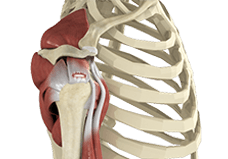
Rotator Cuff Tear
A rotator cuff is a group of tendons in the shoulder joint that provides support and enables a wide range of motion. A major injury to these tendons may result in rotator cuff tears. It is one of the most common causes of shoulder pain in middle-aged and older individuals.

Rotator Cuff Pain
The rotator cuff consists of a group of tendons and muscles that surround and stabilize the shoulder joint. These tendons allow a wide range of movement of the shoulder joint across multiple planes. Irritation or injury to these tendons can result in rotator cuff pain.

Shoulder Pain
Pain in the shoulder may suggest an injury, which is more common in athletes participating in sports such as swimming, tennis, pitching, and weightlifting. The injuries are caused due to the over usage or repetitive motion of the arms.
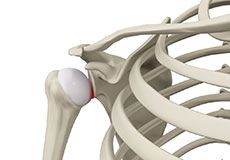
Subluxation
The shoulder is a highly mobile ball and socket joint. The ball of the upper arm bone (humerus) is held in place at the socket (glenoid) of the shoulder blade (scapula) by a group of ligaments. A partial dislocation of the shoulder joint is termed as a subluxation.

Shoulder Impingement
Shoulder impingement is the inflammation of the tendons of the shoulder joint. It is one of the most common causes of pain in the shoulder. Shoulder impingement is also called swimmer’s shoulder, tennis shoulder or rotator cuff tendinitis.

SLAP Tears
The term SLAP (superior –labrum anterior-posterior) lesion or SLAP tear refers to an injury of the superior labrum of the shoulder.
The most common causes include falling on an outstretched arm, repetitive overhead actions such as throwing and lifting a heavy object.

Shoulder Instability
Shoulder instability is a chronic condition that causes frequent dislocation of the shoulder joint.
A dislocation occurs when the end of the humerus (ball portion) partially or completely dislocates from the glenoid (socket portion) of the shoulder.
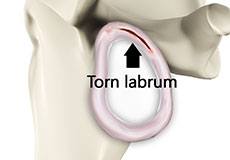
Shoulder Labral Tear
Traumatic injury to the shoulder or overuse of the shoulder (throwing, weightlifting) may cause the labrum to tear. In addition, aging may weaken the labrum leading to injury.

Shoulder Dislocation
Sports that involve overhead movements and repeated use of the shoulder at your workplace may lead to sliding of the upper arm bone from the glenoid. The dislocation might be a partial dislocation (subluxation) or a complete dislocation causing pain and shoulder joint instability.
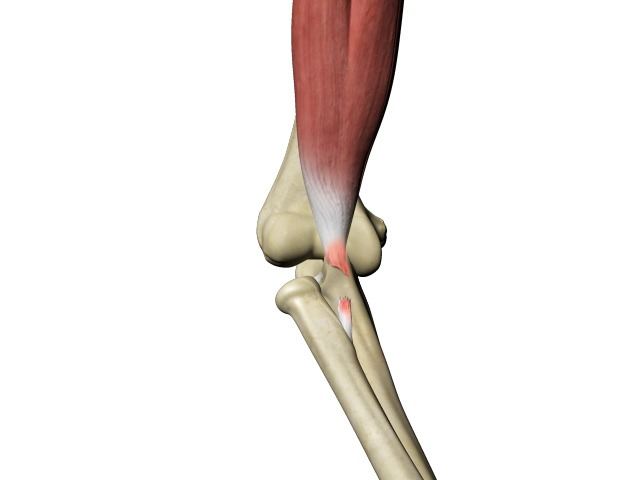
Bicep Tendon Rupture
Overuse and injury can cause fraying of the biceps tendon and eventual rupture. A biceps tendon rupture can either be partial, where it does not completely tear the tendon or complete, where the tendon completely splits in two and is torn away from the bone.
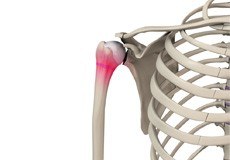
Little League Shoulder
Little league shoulder is an injury to the growth plate of the upper arm bone at the shoulder joint of children. It is an overuse injury caused by repeated pitching or throwing, especially in children between the ages of 10 to 15 years. This condition is mostly seen in baseball pitchers, but children in other sports who use improper throwing action are also at risk.

Clavicle Fracture
The break or fracture of the clavicle (collarbone) is a common sports injury associated with contact sports such as football and martial arts, as well as impact sports such as motor racing. A direct blow over the shoulder that may occur during a fall on an outstretched arm or a motor vehicle accident may cause the clavicle bone to break.
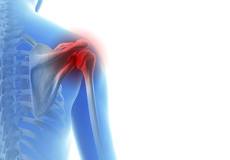
Baseball and Shoulder Injuries
Shoulder injuries in baseball players are usually associated with pitching. While this overhand throwing activity can produce great speed and distance for the ball, when performed repeatedly, can place a lot of stress on the shoulder.
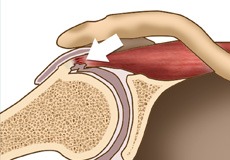
Internal Impingement of the Shoulder
Internal shoulder impingement can be described as a pathological condition resulting from repetitive impingement of the internal surface of the rotator cuff by the bones at the back of the glenohumeral joint.
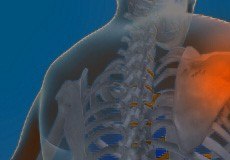
Throwing Injuries of the Shoulder
Throwing injuries of the shoulder are injuries sustained as a result of trauma by athletes during sports activities that involve repetitive overhand motions of the arm as in baseball, American football, volleyball, rugby, tennis, track and field events, etc.
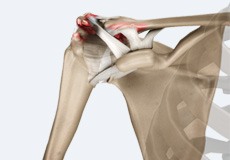
Acromioclavicular (AC) Arthritis
The acromioclavicular joint is part of the shoulder joint. It is formed by the union of the acromion, a bony process of the shoulder blade, and the outer end of the collar bone or clavicle. The joint is lined by cartilage that gradually wears with age as well as with repeated overhead or shoulder level activities such as basketball. The condition is referred to as AC arthritis or acromioclavicular arthritis.

Shoulder Labral Tear with Instability
The shoulder consists of a ball-and-socket joint formed by the upper end of the humerus (upper arm bone) and a cavity in the shoulder blade called the glenoid. The glenoid cavity is surrounded by a rim of cartilage called the labrum.
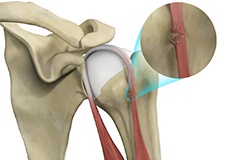
Proximal Biceps Tendon Rupture
The biceps muscle is the muscle of the upper arm which is necessary for the movement of the shoulder and elbow. It is made of a ‘short head’ and a ‘long head’ which function together. These are connected to the shoulder joint by two tendons called the proximal biceps tendons and to the elbow joint by a single distal biceps tendon. A tear or rupture of the proximal biceps tendons is called a proximal biceps tendon rupture.
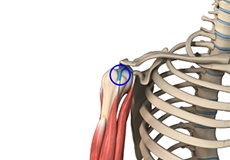
Long Head Biceps Tendon Rupture
Your biceps muscle has two heads, a long head, and a short head, which are both attached to the shoulder. The long head of the biceps tendon is a tough band of connective fibrous tissue that attaches the long head of the biceps to the top of the shoulder socket. Overuse and injury of the biceps muscle during weightlifting or any repetitive physical activity causes fraying and eventual long head biceps tendon rupture.
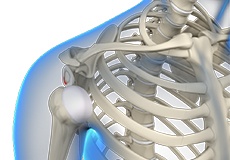
Multidirectional Instability of the Shoulder
Instability may be described by the direction in which the humerus is subluxated or dislocated from the glenoid. When it occurs in several directions it is referred to as multidirectional instability.
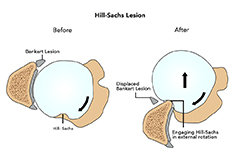
Hill-Sachs Lesion
Damage to the back and outer portion of the humeral head can result in a defect called a Hill-Sachs lesion. A Hill-Sachs lesion usually occurs when the humeral head dislocates towards the front of the joint.

Shoulder Arthroscopy
Arthroscopy is a minimally invasive diagnostic and surgical procedure performed for joint problems. Shoulder arthroscopy is performed using a pencil-sized instrument called an arthroscope. The arthroscope consists of a light system and camera that projects images of the surgical site onto a computer screen for your surgeon to clearly view.
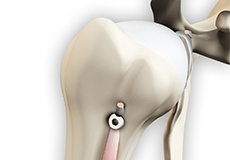
Proximal Biceps Tenodesis
Proximal biceps tenodesis is the surgical reattachment of a torn proximal biceps tendon, which connects the upper part of your biceps muscle to the shoulder.
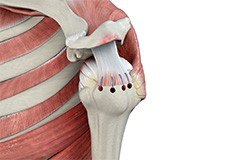
Rotator Cuff Repair
Rotator cuff repair is a surgery to repair an injured or torn rotator cuff. It is usually performed arthroscopically on an outpatient basis. An arthroscope, a small, fiber-optic instrument consisting of a lens, light source, and video camera. The camera projects images of the inside of the joint onto a large monitor, allowing your surgeon to look for any damage, assess the type of injury and repair it. Large rotator cuff tears may require open surgery.

Bicep Tendon Rupture at Shoulder
Overuse and injury can cause fraying of the biceps tendon and eventual rupture. A biceps tendon rupture can either be partial, where it does not completely tear the tendon or complete, where the tendon completely splits in two and is torn away from the bone.
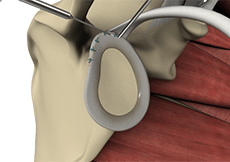
SLAP Repair
A SLAP tear can be treated through an arthroscopic surgical procedure called a SLAP repair.
A SLAP repair is indicated to treat the torn labrum of the shoulder socket when conservative treatment measures such as NSAIDs (non-steroidal anti-inflammatory medications) and physical therapy do not relieve the symptoms of a SLAP tear.
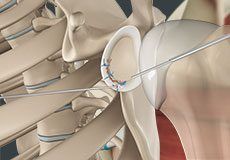
Arthroscopic Bankart Repair
Bankart repair surgery is indicated for a Bankart tear when conservative treatment measures do not improve the condition but instead results in repeated shoulder joint dislocation. Bankart surgery can be performed by a minimally invasive surgical technique called arthroscopy.
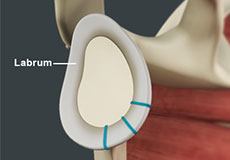
Shoulder Labrum Reconstruction
Traumatic injury to the shoulder or overuse of the shoulder by excessive throwing or weightlifting can cause a labral tear. In addition, the aging process may weaken the labrum, leading to injury secondary to wear and tear.
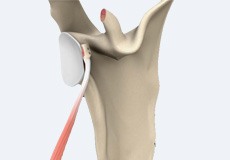
Latarjet Procedure
The shoulder joint provides a wide range of movement to the upper extremity, but overuse or trauma can cause instability to the joint. The Latarjet procedure is a surgical procedure performed to treat shoulder instability by relocating a piece of bone with an attached tendon to the shoulder joint.
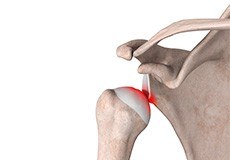
Shoulder Stabilization
Shoulder stabilization surgery is performed to improve stability and function to the shoulder joint and prevent recurrent dislocations. It can be performed arthroscopically, depending on your particular condition, with much smaller incisions.

Acromioclavicular (AC) Joint Reconstruction
The acromioclavicular (AC) joint is one of the joints present within your shoulder. It is formed between a bony projection at the top of the shoulder blade (acromion) and the outer end of the clavicle (collarbone). The joint is enclosed by a capsule and supported by ligaments.
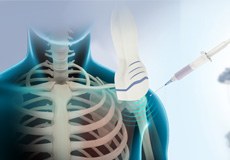
Ultrasound-Guided Shoulder Injections
An ultrasound is a common imaging technique that employs high-frequency sound waves to create images of organs and other internal structures of the body. These images provide valuable information about the underlying pathology of tissues and assists with diagnosis and planning the treatment of a condition.
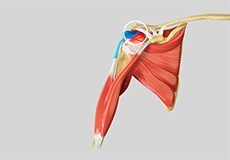
Subacromial Decompression
Subacromial decompression is a surgical procedure performed for the treatment of a condition called shoulder impingement. In shoulder impingement, the degree of space between the rotator cuff tendon and shoulder blade is decreased due to irritation and swelling of the bursa or due to development of bone spurs.
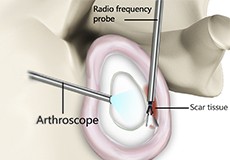
Capsular Release
A capsular release of the shoulder is surgery performed to release a tight and stiff shoulder capsule, a condition called frozen shoulder or adhesive capsulitis. The procedure is usually performed arthroscopically through keyhole-size incisions.

ORIF of the Clavicle Fractures
ORIF/open reduction and internal fixation is a surgical procedure employed for the treatment of a clavicle fracture not amenable to non-surgical conservative treatment.
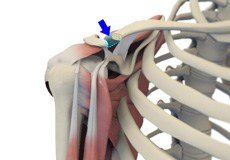
Distal Clavicle Excision
Distal clavicle excision is a procedure which involves removal of the outer end of the clavicle (collarbone) to treat shoulder pain and disability due to arthritis or impingement.
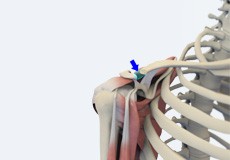
Mumford Distal Clavicle Excision
A Mumford distal clavicle excision is a surgical procedure which involves excision or resection of the outer (distal) end of the clavicle, also called the collar bone.
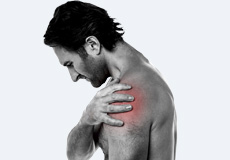
Failed Shoulder Surgery
Failed shoulder surgery is a surgery that did not meet expectations and resulted in recurring pain or other unwanted symptoms. All surgeries are associated with risks, some have a higher risk than others.
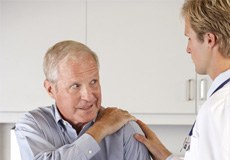
Am I a Candidate for Shoulder Surgery?
More people are considering shoulder surgery to manage shoulder problems thanks to advances in technology and equipment. Surgery is now minimally invasive and can be performed on an outpatient basis with faster recovery and fewer complications.





